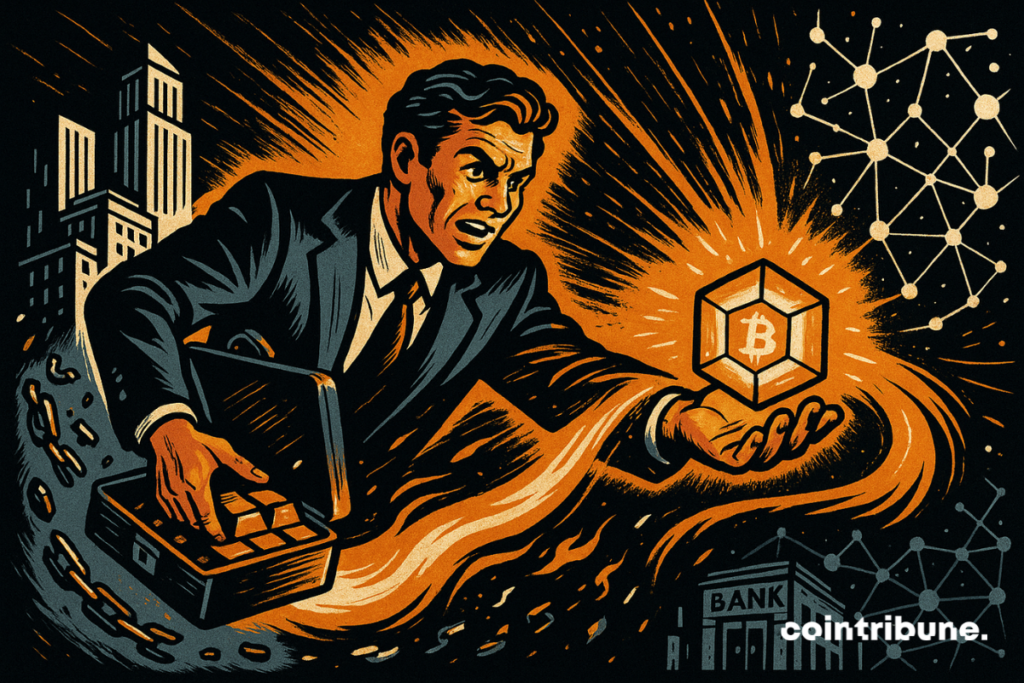Credefi & Brickken Unleash Permissionless Lending for Real-World Assets – The Future of Finance is Here
DeFi just got real—literally. Credefi and Brickken are tearing down the walls between crypto and tangible assets with permissionless lending protocols.
No gatekeepers. No legacy bottlenecks. Just capital flowing where it's needed most.
How it works: Tokenized real-world assets meet decentralized credit markets. Borrowers unlock liquidity without selling; lenders earn yield on everything from invoices to real estate. The kicker? Smart contracts replace loan officers—because who needs human bias when code determines creditworthiness?
Wall Street's worst nightmare: A system where a warehouse receipt gets better rates than a Goldman Sachs bond. The revolution won't be centralized.
One cynical footnote: Finally, an 'innovation' that doesn't involve creating yet another speculative token. Maybe—just maybe—DeFi is growing up.

In brief
- Brickken tokenized securities can now serve as collateral on Credefi.
- 100% decentralized USDC loans, without intermediaries or third-party custody.
- Alliance between regulatory compliance and DeFi liquidity for RWAs.
Specifically, this means no institutional intermediary intervenes in the process: no approval desk, no trusted third party, no centralized arbitration. The loan terms (amount, duration, rate) are freely defined between borrower and lender, and all flows pass through, ensuring the collateral is held until repayment or liquidation. All within a framework compliant with European regulatory requirements (MiCA, MiFID), ensured upstream by Brickken.
From tokenization to liquidity: what really changes
Until now, most tokenized securities were subject to a custodial logic, or even passive speculation. By making these assets, the Brickken–Credefi integration offers a new tangible utility to tokenization:, while retaining control over the loan parameters.
On the lender side, this system provides access to(equity tokens or bonds), instead of being exposed only to volatile tokens or those disconnected from tangible economic value.
The solution remains: no custodians, no centralized decisions, and automated repayment through.
Why Credefi and Brickken made sense
- Brickken built a token-as-a-service chain: KYC, securities registry, MIFID/MiCA compliance, a layer that asset holders favor to issue equity tokens or debt tokens without hacking the regulation.
- Credefi, on its side, specializes in decentralized credit backed by RWAs (invoices, SME loans, private bonds) and already operates rated, controlled, and insured pools in Europe.
The alliance thus relies on:(Brickken) on one hand,(Credefi) on the other. Together, they transform a “compliant” security intousable wherever USDC is accepted.
A step towards an organic secondary market?
The real question is:The first volumes will tell if the model appeals:
| Indicator | Why it matters |
| Amount of collateral deposited | Measures the appetite of issuers to immobilize their equity token. |
| Volume of USDC loans made | Gives the real depth of the market and the efficiency of rate discovery. |
| Secondary spread on tokenized RWAs | The more the loan liquefies liquidity, the narrower the buyer-seller spread should become. |
Facing these first challenges, the founders of both companies express their confidence: ” We prove that tokenization is not limited to creating a digital twin; it is about unleashing“, summarizes, CEO of Brickken.
Reasonable points of caution
Like anysystem, the setup remains exposed to several challenges:
- Asset valuation depends on the latest available assessments, without real-time oracle.
- P2P matching is based on direct supply and demand, without a pooled pool, a lender still needs to respond to each offer.
- Legal implications may vary by jurisdiction, notably outside the EEA.
Identified limits, but expected at this stage of maturity. The whole remains solid, functional, and already represents a significant breakthrough in integrating tokenized assets into decentralized finance.
Towards a new generation of decentralized loans
By allowing ato become, Brickken andfill a:for tokenized assets.
If they manage to attract aand prove the(repayments, clean liquidations, transparent reporting), the integration could well serve as afor other asset classes: fractional real estate, infrastructure debts, or industrial receivables.
For now, the market finally has a, whereandcan interface freely, without major entry barriers.
Maximize your Cointribune experience with our "Read to Earn" program! For every article you read, earn points and access exclusive rewards. Sign up now and start earning benefits.

